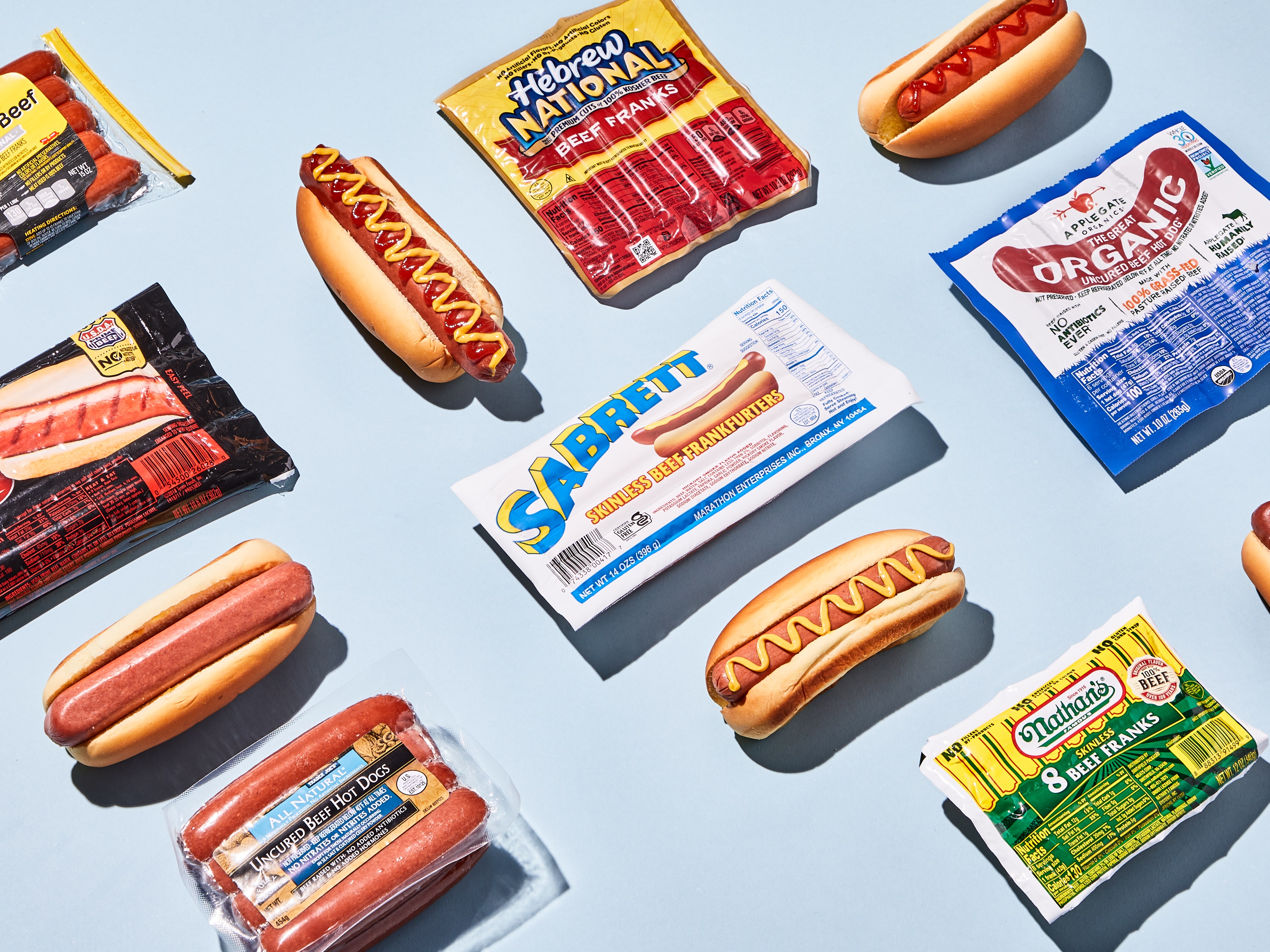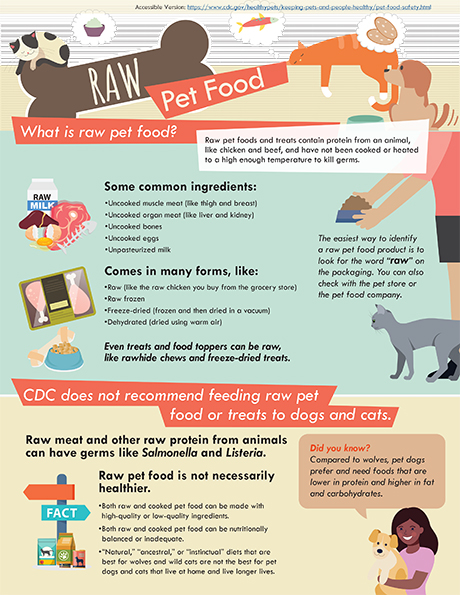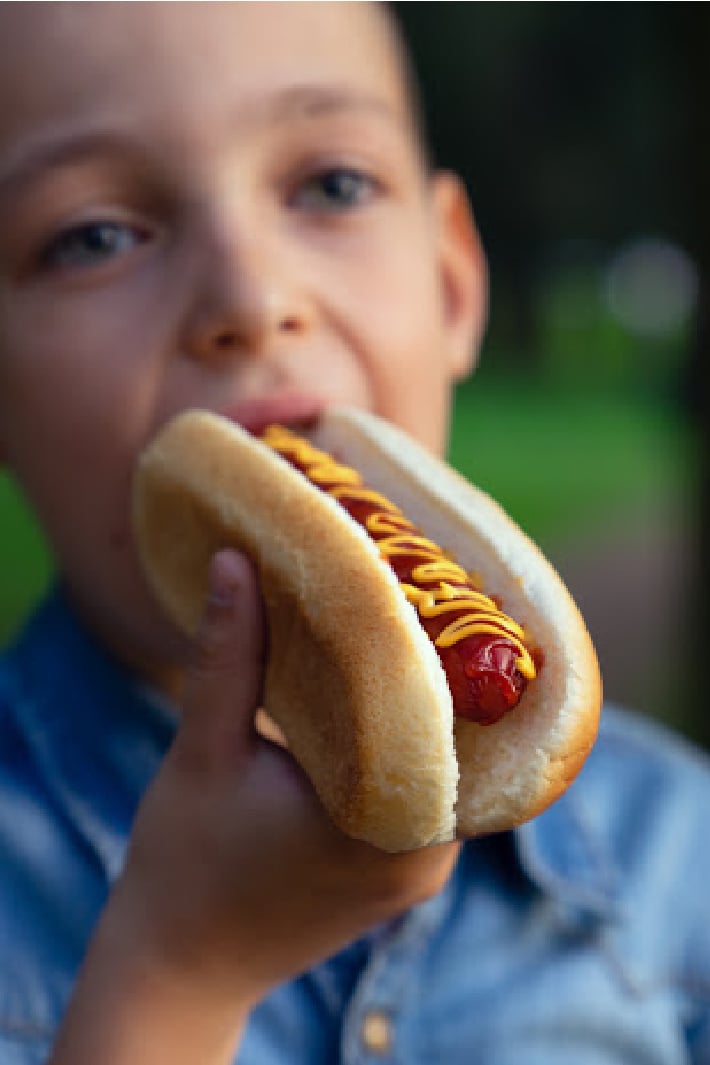Introduction

Hot dogs are a beloved food enjoyed by many people worldwide. While they are typically consumed after being cooked, some individuals may wonder about the safety of eating raw hot dogs. This article explores the various food safety concerns associated with consuming raw hot dogs and the potential risks involved. It also discusses the impact of raw hot dogs on digestive health and provides tips for safe handling and cooking. Additionally, it suggests alternative ways to enjoy hot dogs in a healthier and safer manner. Overall, understanding the safety considerations surrounding raw hot dogs is crucial for maintaining a healthy and enjoyable dining experience.
What Are Raw Hot Dogs And Food Safety Concerns
Raw hot dogs are uncooked sausages made from a variety of meats such as beef, pork, turkey, or chicken. Consuming raw hot dogs poses several food safety concerns. Raw meat, including hot dogs, can harbor harmful bacteria like Salmonella and Listeria monocytogenes, which can cause foodborne illnesses. These bacteria can survive if the hot dogs are not cooked thoroughly. Raw hot dogs also have the potential for cross-contamination, as they may come into contact with other raw meats or surfaces during production. Proper cooking and handling techniques are necessary to ensure the safety of consuming hot dogs.
Unsafe Practices When Consuming Raw Hot Dogs
Note: It is important to avoid consuming raw hot dogs to minimize the risk of foodborne illnesses. Unsafe practices such as eating raw hot dogs can lead to potential health risks. When consuming hot dogs, it is essential to practice safe food handling and proper cooking methods. Some unsafe practices when consuming raw hot dogs include:
- Eating raw hot dogs without cooking them adequately: Raw hot dogs may contain harmful bacteria that can cause foodborne illnesses if not cooked thoroughly.
- Not washing hands before and after handling hot dogs: It is crucial to wash hands with soap and water before and after handling raw hot dogs to prevent cross-contamination.
- Keeping hot dogs at room temperature for an extended period: Leaving hot dogs at room temperature for too long allows bacteria to grow and increases the risk of food poisoning.
- Failing to properly store hot dogs: Hot dogs should be kept refrigerated at or below 40°F (4°C) to prevent bacterial growth.
By following safe food handling practices and ensuring hot dogs are cooked thoroughly, you can reduce the risk of foodborne illnesses and ensure your safety. Remember, consuming raw hot dogs is not recommended.
Risks Of Eating Raw Hot Dogs

Eating raw hot dogs poses several risks to one’s health. Raw hot dogs may harbor bacteria and pathogens, such as Listeria, Salmonella, and E. coli, which can cause foodborne illnesses. These bacteria can lead to symptoms like nausea, vomiting, diarrhea, and fever. Consuming raw hot dogs also increases the risk of cross-contamination, especially if proper hand hygiene and storage practices are not followed. The nutritional value of raw hot dogs may also be compromised, as cooking can help destroy harmful bacteria and improve digestibility. To minimize these risks, it is best to cook hot dogs thoroughly before consuming them.
Bacteria And Pathogen Contamination In Raw Hot Dogs
Raw hot dogs can be contaminated with bacteria and pathogens, posing a risk to consumers. Common bacteria found in raw hot dogs include Listeria, Salmonella, and E. coli. These bacteria can cause foodborne illnesses, leading to symptoms like nausea, vomiting, diarrhea, and fever. Cross-contamination is also a concern, especially if proper storage and handling practices are not followed. Cooking hot dogs thoroughly helps destroy harmful bacteria and reduces the risk of foodborne illnesses. To ensure food safety, it is important to handle and cook hot dogs properly.
Foodborne Illnesses Associated With Consuming Raw Hot Dogs
Consuming raw hot dogs can lead to foodborne illnesses due to the potential contamination of harmful bacteria and pathogens. Some of the common foodborne illnesses associated with raw hot dogs include listeriosis, salmonellosis, and E. coli infection. These illnesses can cause symptoms such as stomach cramps, nausea, vomiting, diarrhea, and fever. In severe cases, they can even lead to hospitalization and life-threatening complications, especially for individuals with weakened immune systems, pregnant women, and young children. It is crucial to cook hot dogs thoroughly to kill any bacteria and reduce the risk of foodborne illnesses.
Health Considerations

It is important to consider the impact of consuming raw hot dogs on digestive health. Raw hot dogs may contain harmful bacteria that can lead to foodborne illnesses such as listeriosis, salmonellosis, and E. coli infection. These can cause symptoms like stomach cramps, nausea, vomiting, diarrhea, and fever. Additionally, raw hot dogs may not provide the same nutritional value as cooked ones. Therefore, it is recommended to always cook hot dogs thoroughly to ensure their safety and minimize the risk of foodborne illnesses. Proper handling, storage, and cooking methods should also be followed to maintain food safety.
Impact Of Consuming Raw Hot Dogs On Digestive Health
Consuming raw hot dogs can have a negative impact on digestive health. Raw hot dogs may contain harmful bacteria such as Listeria, Salmonella, and E. coli, which can lead to foodborne illnesses. These bacteria can cause symptoms like stomach cramps, nausea, vomiting, diarrhea, and fever. Raw hot dogs may also be more difficult for the digestive system to process compared to cooked ones. It is important to cook hot dogs thoroughly to ensure their safety and minimize the risk of digestive health issues. Proper cooking methods can help destroy harmful bacteria and promote better digestion.
Nutritional Value And Safety Of Raw Hot Dogs
Raw hot dogs have a relatively low nutritional value compared to other foods. They are typically high in sodium and fat, which can be detrimental to overall health if consumed in excessive amounts. Additionally, raw hot dogs may contain harmful bacteria and pathogens, making them unsafe to eat without proper cooking. Cooking hot dogs thoroughly helps eliminate these risks and ensures food safety. It is important to consider alternative options for consuming hot dogs that prioritize nutritional value and safe food practices.
Safe Handling And Cooking Tips

To ensure the safety of hot dogs, it is crucial to follow proper handling and cooking practices. Here are some tips to help you safely prepare and cook hot dogs:
- Proper Storage: Store hot dogs in the refrigerator at temperatures below 40°F (4°C) to prevent bacterial growth.
- Handling: Wash your hands thoroughly before and after handling hot dogs to avoid cross-contamination.
- Cooking Temperature: Cook hot dogs to an internal temperature of 165°F (74°C). Use a food thermometer to ensure proper cooking.
- Grilling: If grilling hot dogs, preheat the grill to medium-high heat and cook for about 10-15 minutes, turning occasionally.
- Boiling: Bring a pot of water to a boil and add the hot dogs. Cook for about 5-7 minutes.
- Microwaving: Place hot dogs in a microwave-safe dish and cook on high for about 1-2 minutes.
By following these safe handling and cooking tips, you can enjoy hot dogs without compromising your health.
Proper Storage And Handling Of Hot Dogs
Hot dogs should be stored properly to prevent bacterial growth and ensure food safety. To maintain freshness, hot dogs should be stored in the refrigerator at temperatures below 40°F (4°C). It is important to check the expiration date and discard any hot dogs that are past their recommended shelf life. When handling hot dogs, it is crucial to wash hands thoroughly before and after to avoid cross-contamination with harmful bacteria. By practicing proper storage and handling techniques, you can reduce the risk of foodborne illnesses associated with raw hot dogs.
Cooking Methods To Ensure Safety Of Hot Dogs
When it comes to cooking hot dogs, there are a few methods you can employ to ensure their safety. The most common and recommended method is to grill them. Grilling not only provides a delicious smoky flavor but also helps to kill any bacteria present on the surface of the hot dog. You can also boil or steam hot dogs, which also effectively eliminates bacteria. It is important to cook hot dogs until they are heated throughout, reaching an internal temperature of at least 165°F (74°C). By following these cooking methods, you can ensure that hot dogs are safe to consume and reduce the risk of foodborne illnesses.
Alternatives To Eating Raw Hot Dogs

Many people enjoy the taste and convenience of hot dogs, but if you have concerns about consuming them raw, there are alternatives. One option is to cook the hot dogs thoroughly before eating them. Grilling, boiling, or steaming hot dogs can help eliminate any potential bacteria and ensure their safety. Another alternative is to opt for pre-cooked hot dogs or sausages that can be heated quickly in a microwave or on a stovetop. These options provide a safer and equally satisfying way to enjoy hot dogs without the risks associated with eating them raw.
Healthier Alternatives For Enjoying Hot Dogs
If you’re looking for healthier alternatives to raw hot dogs, there are several options to consider. One option is to choose turkey or chicken hot dogs instead of traditional beef or pork ones. These leaner meat options can be lower in fat and calories. Another alternative is to try veggie hot dogs made from plant-based ingredients like tofu or seitan. These provide a vegetarian or vegan-friendly option with less saturated fat. Additionally, you can switch out the traditional white bread bun for a whole grain bun or opt for lettuce wraps instead. These alternatives can help you enjoy hot dogs while making healthier choices for your diet.
Creative Ways To Prepare Hot Dogs Safely
When it comes to preparing hot dogs, there are creative ways to ensure safety while enjoying this popular treat. One option is to spiralize your hot dogs and grill them on skewers for a unique twist. Another idea is to wrap them in crescent roll dough and bake them for a tasty hot dog crescent roll roll-up. You can also try stuffing hot dogs with cheese or wrapping them in bacon for added flavor. These creative preparations not only make hot dogs more exciting, but also ensure they are cooked thoroughly and safely.
Conclusion

In conclusion, consuming raw hot dogs poses significant food safety concerns due to the risk of bacterial contamination and foodborne illnesses. While hot dogs are fully cooked, reheating them until steaming hot is recommended, especially for those at an increased risk of foodborne illness. It is essential to handle and store hot dogs properly to prevent any risks. Additionally, there are healthier alternatives and creative ways to prepare hot dogs safely, ensuring a delicious and safe dining experience. By following these guidelines, individuals can enjoy hot dogs without compromising their health and well-being.
Summary Of Food Safety Concerns Regarding Raw Hot Dogs
Consuming raw hot dogs raises significant food safety concerns due to the potential for bacterial contamination and the risk of foodborne illnesses. Although hot dogs are technically pre-cooked, they can still harbor harmful bacteria and pathogens. This can lead to digestive health issues and increase the likelihood of foodborne illnesses such as Salmonella or Listeria infection. To ensure the safety of hot dogs, proper storage and handling practices are necessary. Additionally, cooking hot dogs until they are steaming hot before consumption is recommended. By following these precautions, individuals can reduce the risk of foodborne illnesses associated with raw hot dogs.
Recommendations For Safe Consumption And Conclusion
To ensure safe consumption of hot dogs, it is important to follow these recommendations. Firstly, always handle and store hot dogs properly, refrigerating them promptly and avoiding cross-contamination. Secondly, cook hot dogs thoroughly by heating them until they are steaming hot. This helps kill any harmful bacteria that may be present. Additionally, consider healthier alternatives to raw hot dogs such as grilled or boiled hot dogs. Lastly, stay informed about food safety practices and make educated choices when it comes to consuming any food. By implementing these recommendations, individuals can reduce the risk of foodborne illnesses associated with raw hot dogs. In conclusion, while the appeal of raw hot dogs may be tempting, prioritizing food safety is crucial for maintaining good health.
FAQ About Eating Raw Hot Dogs: Considering Food Safety Concerns
Q: Can you eat raw hot dogs?
A: It is not recommended to eat raw hot dogs.
Q: Why is it not safe to eat raw hot dogs?
A: Raw hot dogs may contain harmful bacteria that can cause foodborne illnesses if not cooked properly.
Q: How should hot dogs be cooked to ensure they are safe to eat?
A: Hot dogs should be cooked thoroughly until they reach an internal temperature of 165°F (73.9°C) to kill any harmful bacteria.
Q: What are the risks of eating raw hot dogs?
A: Eating raw hot dogs can increase the risk of food poisoning and other gastrointestinal issues due to the presence of bacteria like Listeria and Salmonella.
Q: Are there any safety tips for handling hot dogs?
A: Follow proper food safety practices, such as refrigerating hot dogs promptly, washing hands and surfaces, and using separate utensils for raw and cooked foods.
Q: How can one enjoy hot dogs safely?
A: Enjoy hot dogs safely by cooking them thoroughly, following storage guidelines, and paying attention to expiration dates to reduce the risk of foodborne illnesses.
Q: Can children, pregnant women, or individuals with weakened immune systems eat hot dogs?
A: It is especially important for vulnerable populations like children, pregnant women, and individuals with weakened immune systems to avoid eating raw hot dogs and ensure they are fully cooked before consumption.

Stutts House of Barbecue is a haven for BBQ enthusiasts, offering a delectable array of smoked delicacies, including ribs, beef, bologna, and chicken, accompanied by all the trimmings you could ever dream of. Our passion for perfecting the art of smoking meats shines through in every savoury bite. At Stutts House of Barbecue, we take pride in our custom smoking techniques, ensuring that each piece of meat is infused with the perfect blend of smoky flavours. But it doesn’t stop there – our homemade desserts are the cherry on top of a delicious meal, adding a sweet finish to your BBQ experience.